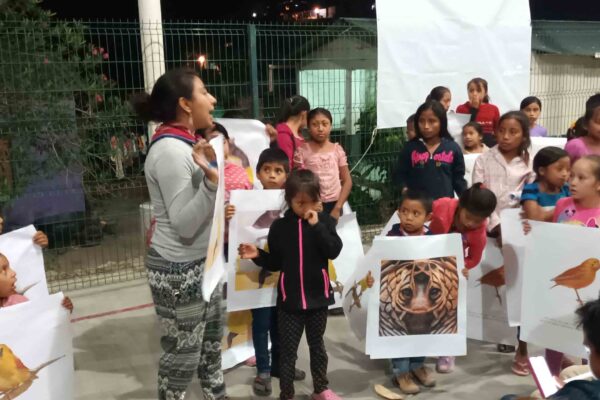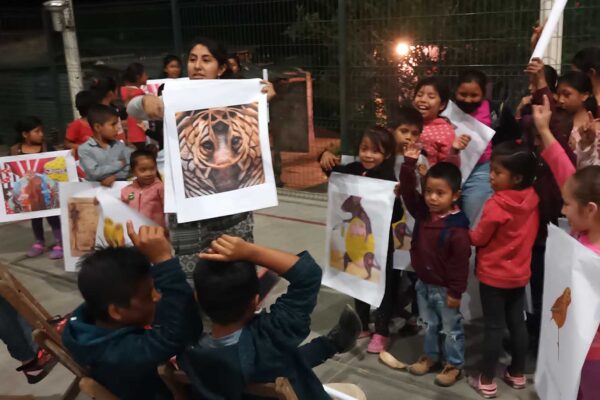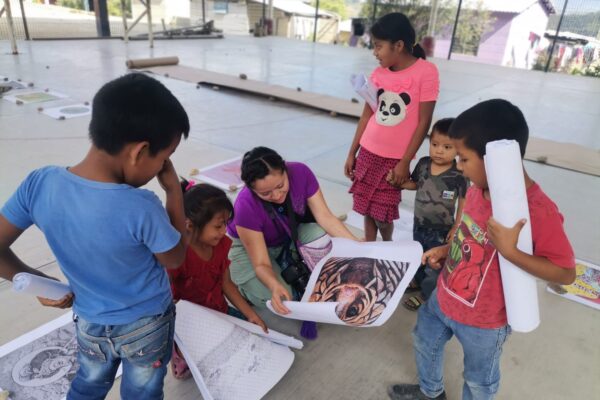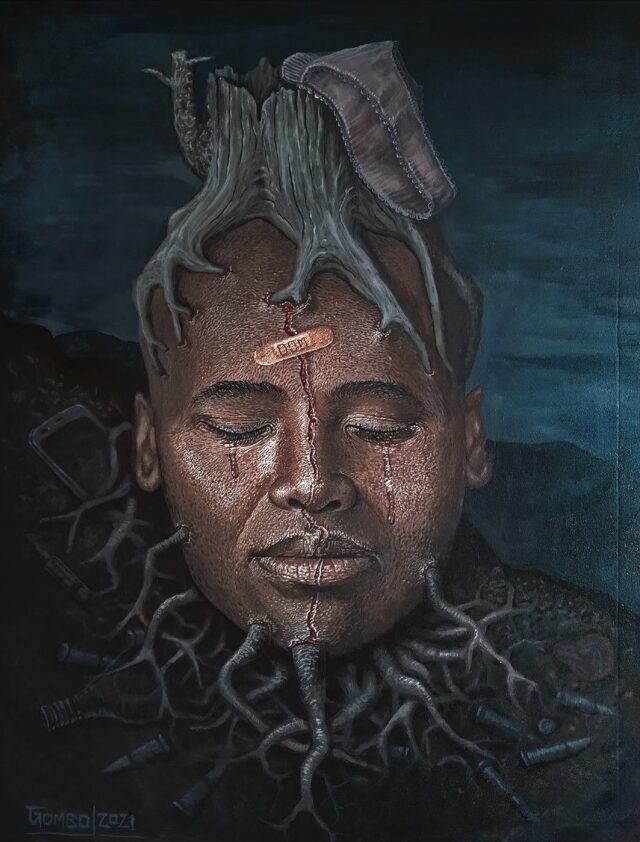
“Prempuan” by Yanto Gombo, Udeido Collective, oil on canvas, 2021.
Global markets are expanding, undermining the conditions of life on earth. As the privileged few create cosmopolitan refuges in growing deserts, other peoples and creatures are living with slow violence and ongoing war.
Industrial processes are uncoupling life from death, diminishing death’s capacity to channel vitality back to the living. Life is becoming non-life on a planetary scale.
An unruly multitude is starting to destabilize anthropos—the figure of the unified human that has been imagined as the driving force of the Anthropocene. While some hold onto hopes for a post-human future—a world without us—this installation aims to expose and derail necropolitical assemblages with new bio-cultural articulations.
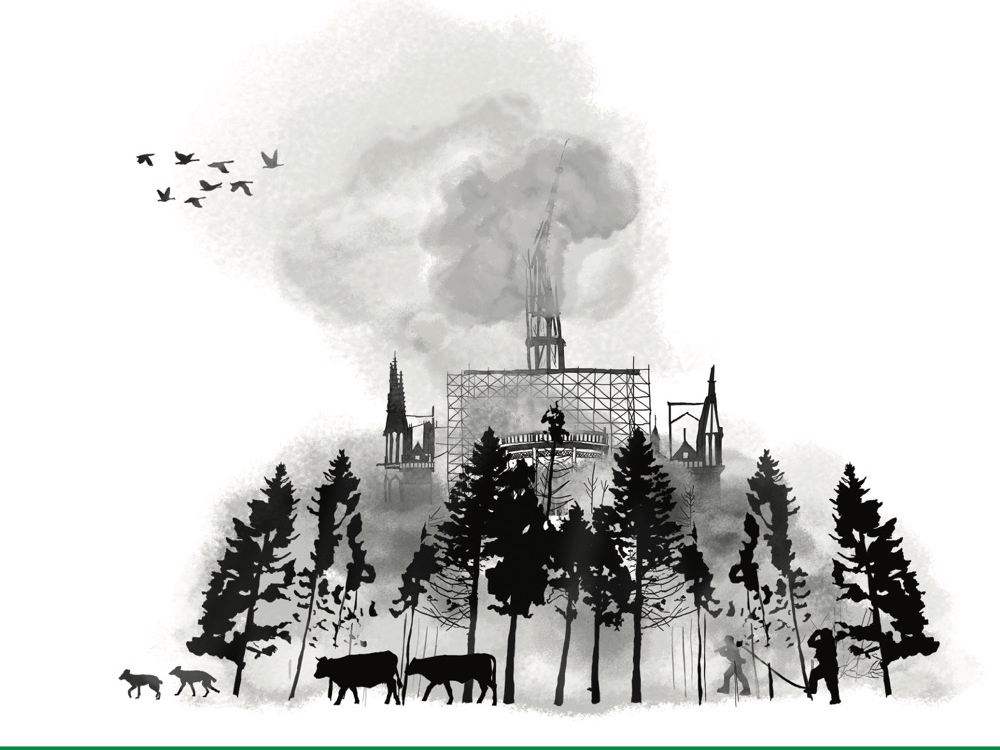
“Multiworld Justice” by Feifei Zhou, digital drawing, 2022.
The Multispecies Justice Collaborative formed in a Zoom room, during the long months of the pandemic lockdown. Anthropologists, poets, science fiction authors, philosophers, geographers, and visual artists gathered to speculate about the possibilities of justice in more-than-human worlds. The Collaborative launched The Promise of Multispecies Justice book with a poster campaign, art exhibition, and event series in Mexico in December 2022. Initially the works work on display at Universidad Iberoamericana Puebla (7-10, 2022) and then they travelled to the community of Miguel Hidalgo in the highlands of Chiapas. Selected artworks and posters have travelled to Oxford where they have mixed and mingled with interventions related to justice by local creative agents.
The Oxford “Species of Justice” exhibition was curated by Eben Kirksey in consultation with Elizabeth Hallam and Paola Esposito of the Art and Anthropology Collective. This version of the exhibition features artworks, installations, and curatorial interventions by: Julieta Aranda, the Udeido Collective (Yanto Gombo, Costantinus Raharusun, Dicky Takndare, Nelson Natkime, Michael Yan Devis), Taylor Paone, John Manton, Daria Ivans, Marcus Kurzbach, Adam Zaretsky, Artificial Intelligence, Femke Vulto, Beatriz Mutter Quindere Fraga, Gabriele Paone, Gwen Burnyeat, and Eben Kirksey.
This installation aims to animate and complicate a glossary: “Species of Justice (PDF – download) by Sophie Chao and Eben Kirksey. We have collected objects, images, artefacts, and artworks to illustrate how new energies of social justice are coursing through human networks, contesting hegemonic forces, and intersecting with other forces in multispecies worlds. The posters were designed by Julieta Aranda to animate and complicate the book’s glossary, which indexes key Ideas and images about transformative justice, patches of justice, and social justice are inhabiting spaces that are haunted by spectres from multispecies worlds.
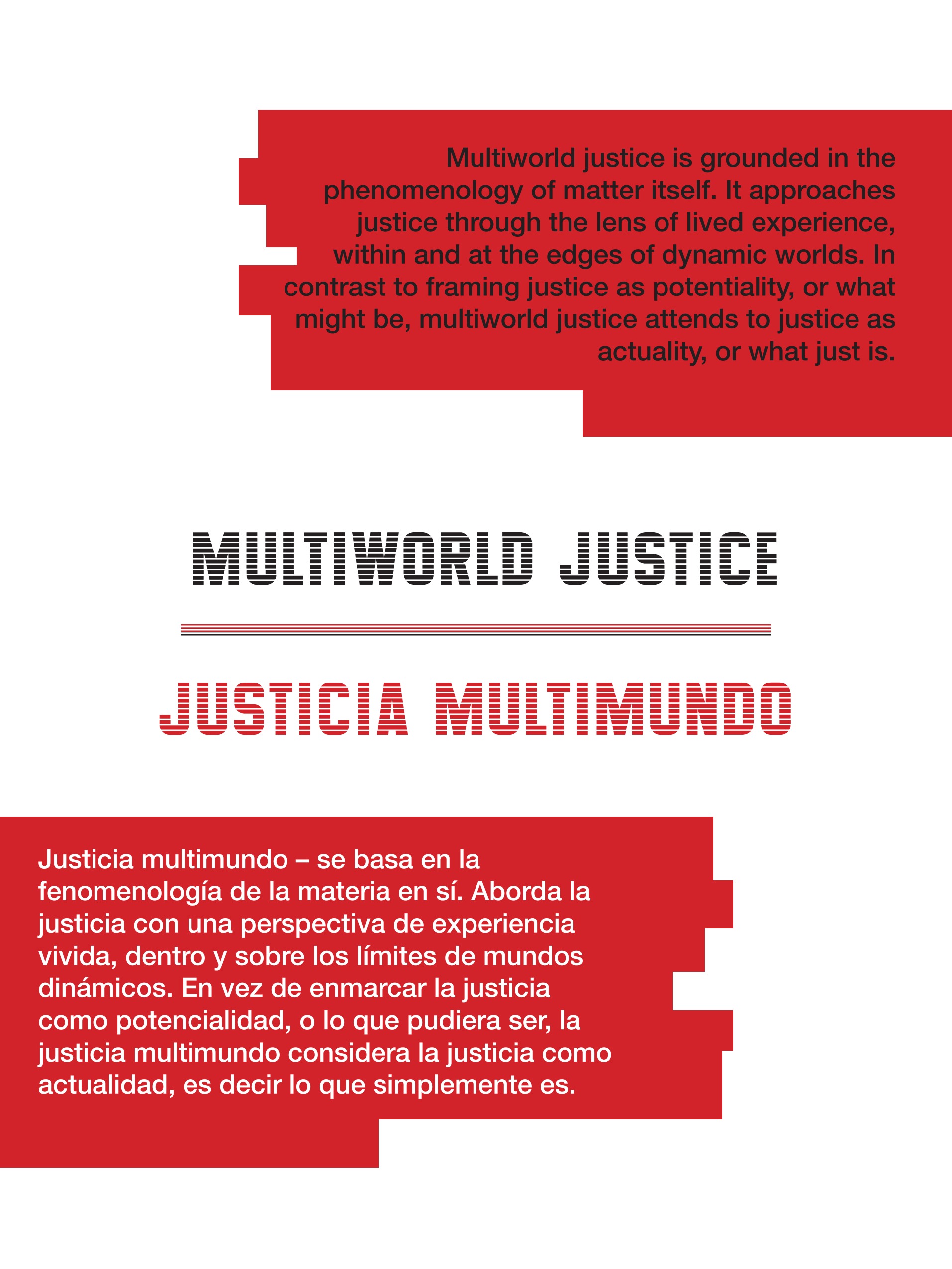
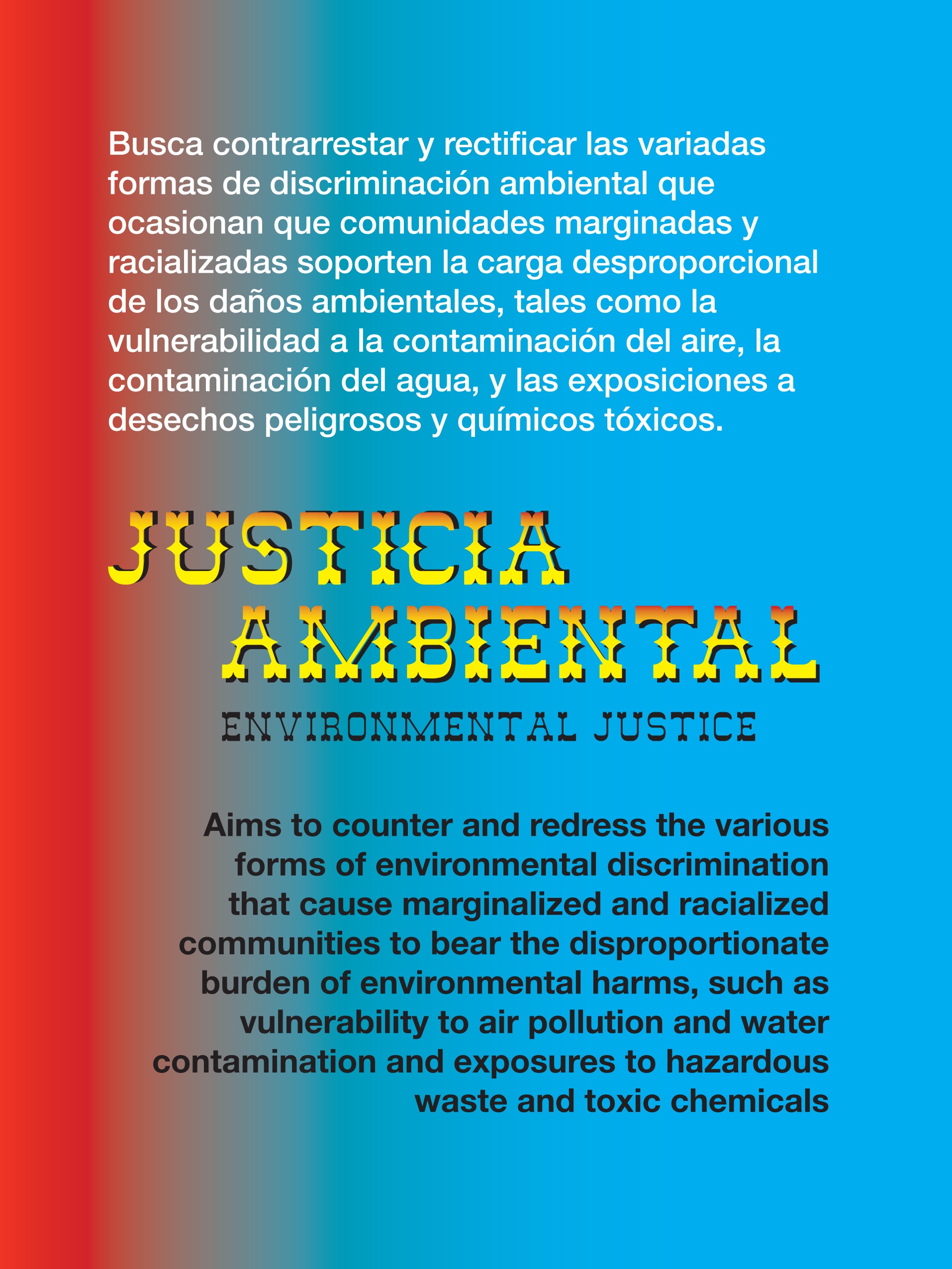
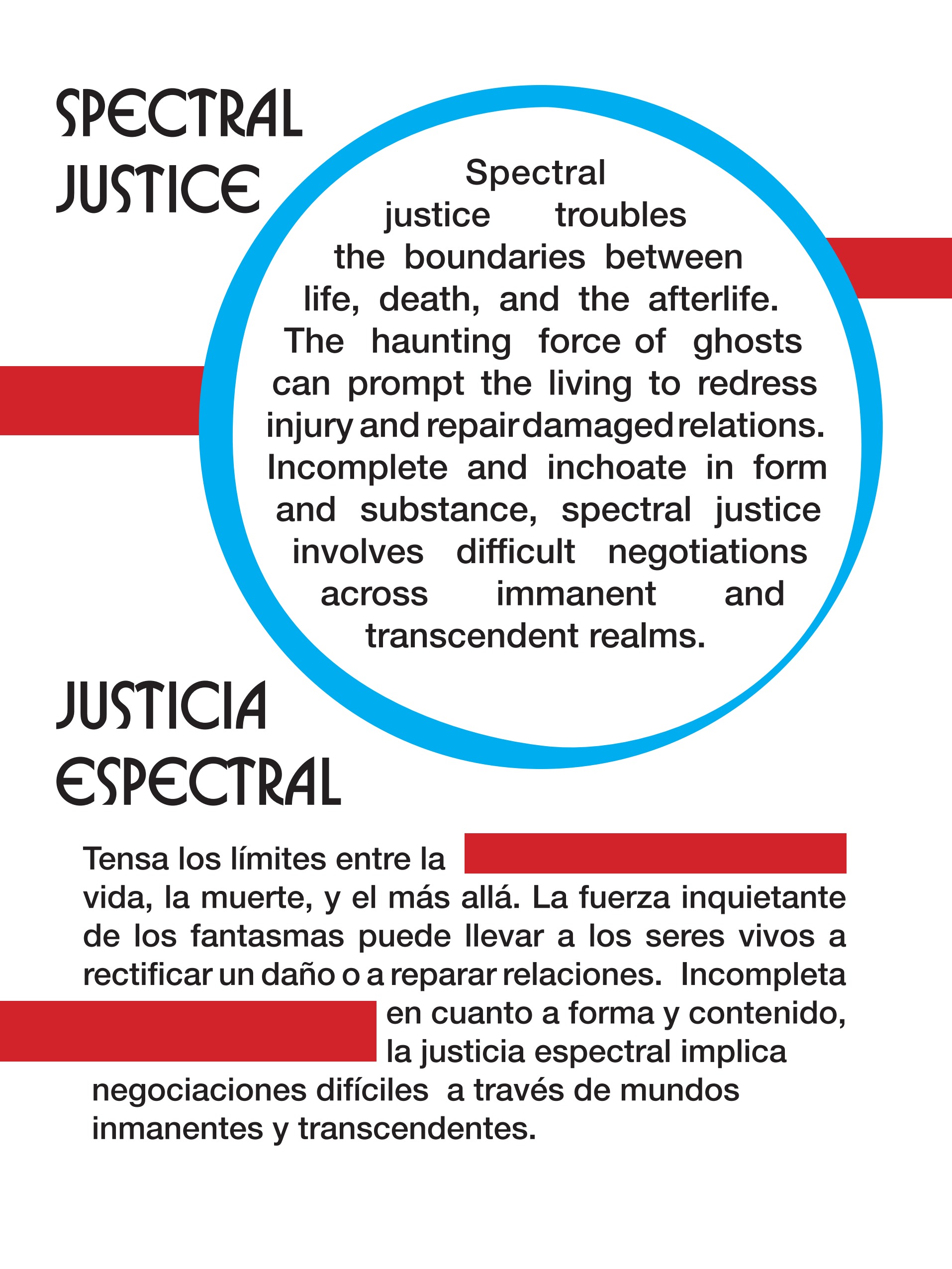
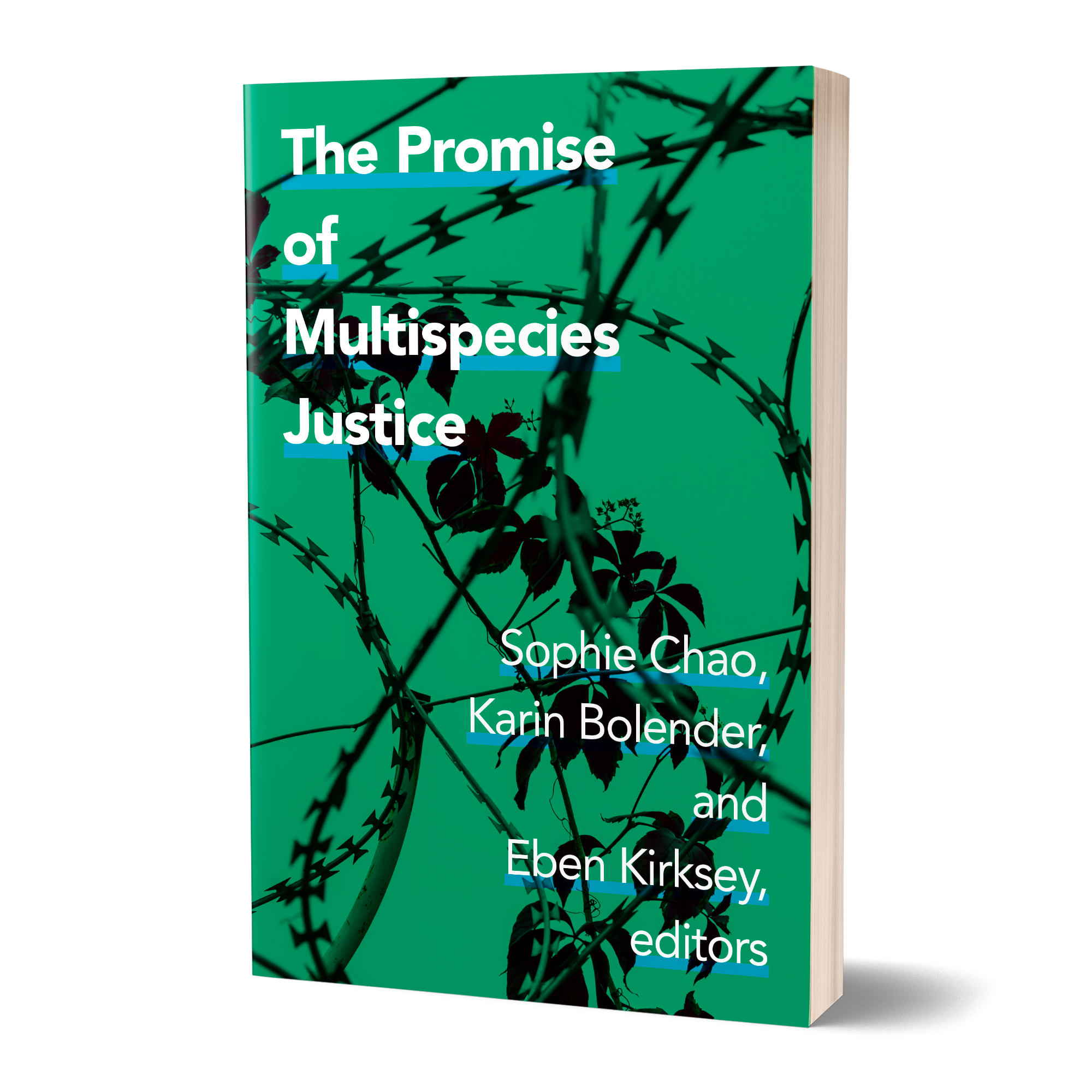
Multispecies Justice in Chiapas
After our opening at a university near Mexico City elements of the installation became deterritorialized—travelling to a village in the highlands of Chiapas. The children of Miguel Hildalgo, a village in Chiapas, served as the jury for our art exhibit. The children selected the artworks that were awarded prizes, in conversation with our curatorial collective our curatorial collective—namely Eben Kirksey, Julieta Aranda, Liliana Riva Palacio, and Francisco Vergara-Silva.
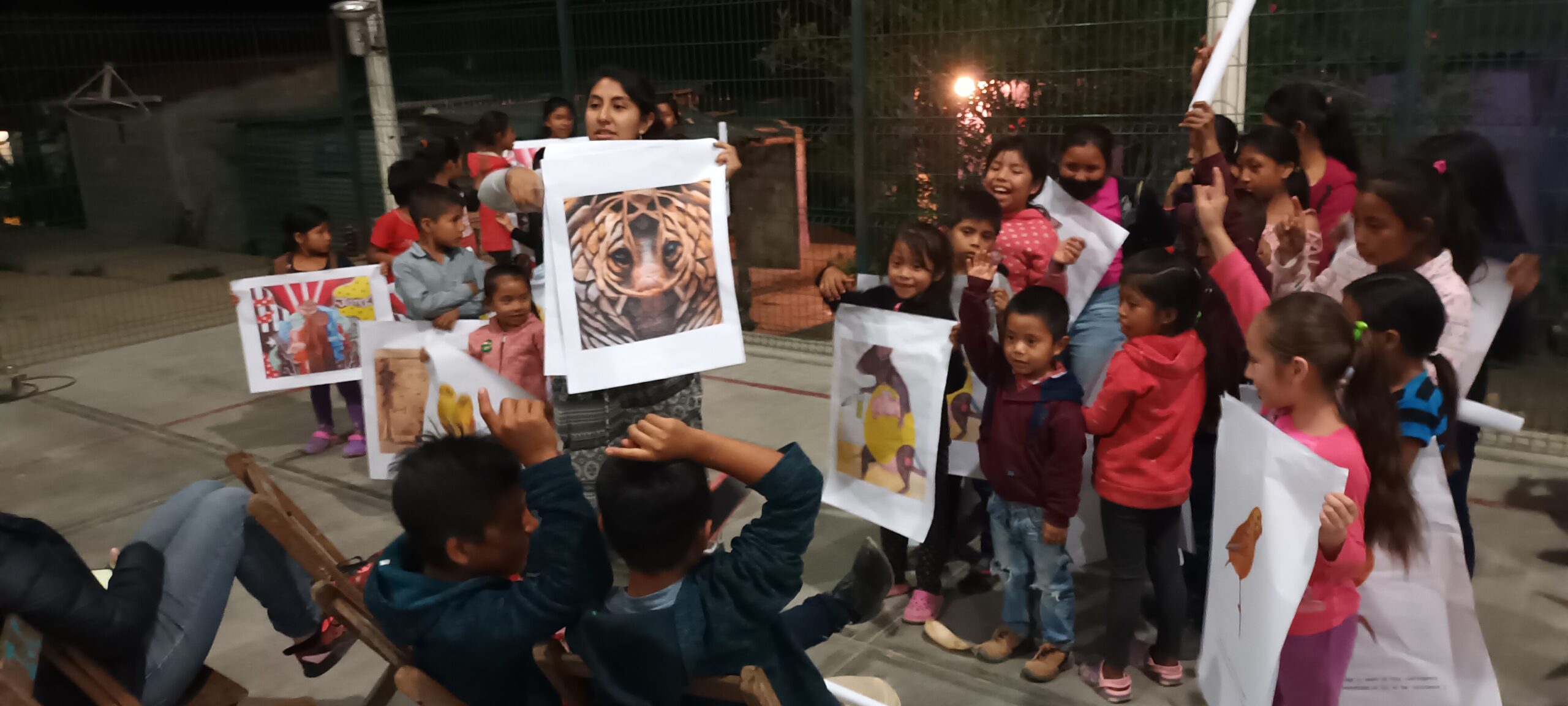
First Prize:
A Ceremony for the Mother Spirits
An experiment in nonlinguistic exchange that can act as a sensory interface between humans and non-humans, the healing invocations and chants in this piece arose in an ayahuasca ceremony absent of any human patients. The five healers (Elisa Vargas Fernández, Walter Ramiro Lopez Lopez, Rogelia Valera Gonsalez, Claudio Sinuiri Lomas, Francisco Vargas Fernández) from the Union of Shipibo Healers Asomashk, who conducted the ceremony voyaged to address the world of water, the world of the forest, interacting with the sound-spirits of its inhabitants at night.
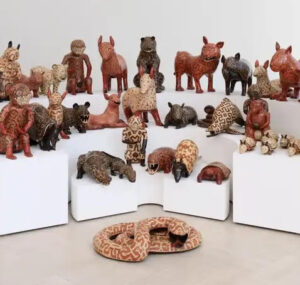
Listen on SoundCloud
“I’m traveling on land and under water. I’m flying over the sky and the mountains. I’m searching the riverbed to understand your sickness,” sings one of the healers while reaching up to the celestial and the aquatic worlds, above and below, worlds within worlds. In this multiverse, human beings are embedded in and need nature. Bodies, spirits, and territories are not divorceable from one another. Ecological imbalances reflect discord in the spiritual sphere and manifest as illness in the material dimension. Ceremonial work with plants is considered an art of social as well as physiological healing. Here it is also an ecological exploration and exhortation.
ASOMASHK, the Union of Shipibo Healers, was formed in 2018 to take a stand against spiritual extractivism, given the enormous foreign interest in Amazonian plant medicine. Its mission is to call for a politically conscious and anti-colonialist set of practices that take into account power differentials, economic inequality and the social reality of Shipibo communities.
Sound recording: Wihtner FaGo. Sound editing: Rose Generoso. Produced by: Shipibo Conibo Center.
Second Prize:
Recognition Justice
By Marcus Kurzbach
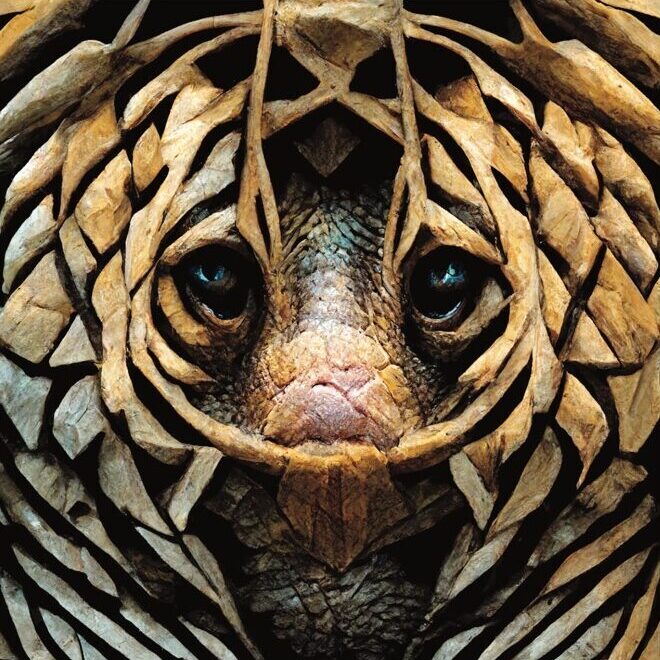
Marcus Kurzbach generated this image by typing a sentence from The Promise of Multispecies Justice into an AI image generating system. He typed: “Some endangered animals are finding recognition justice as they are elevated within cultural, legal, and institutional regimes.”
Third Prize:
Perempuan
By Yanto Gombo

The title of this piece “Prempuan” simply means “Woman.” The band-aid on her forehead has the initials standing for Military Operation Area (Daerah Operasi Militer, or DOM). This image was submitted by the Udeido Collective, a group of artists from West Papua.
Fourth Prize:
Kauyumari: Encuentro Sagrado
By Isabel Gómez
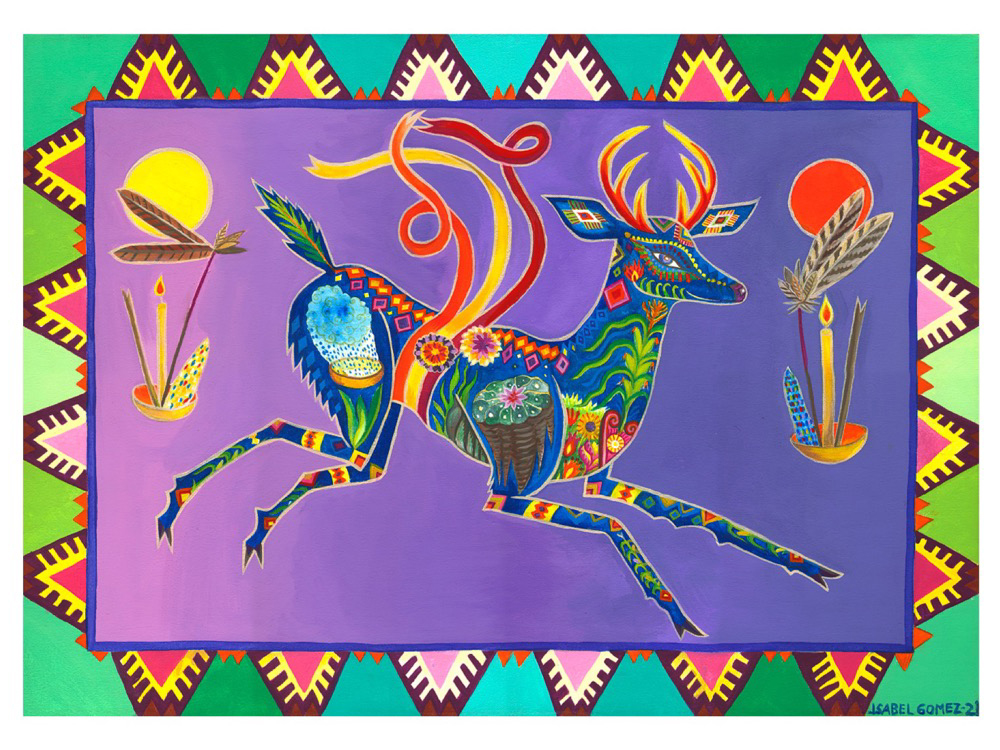
Fourth Prize:
Mitos que Matan
By Daniela Cafaggi
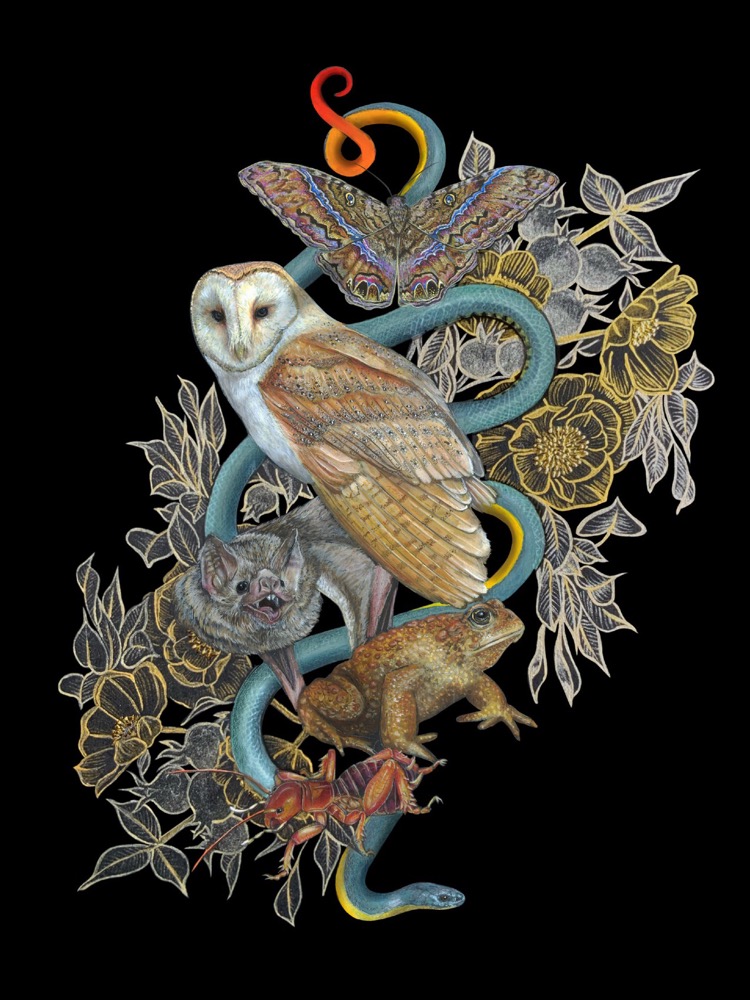
This painting depicts unloved others–bats, frogs, snakes, owls, mole crickets, and moths–that are often vilified in stories, and targeted for extermination. It is titled “Mitos que Matan” or “Myths that Kill.”
Fifth Prize:
Lawan
By Michael Yan Lewis
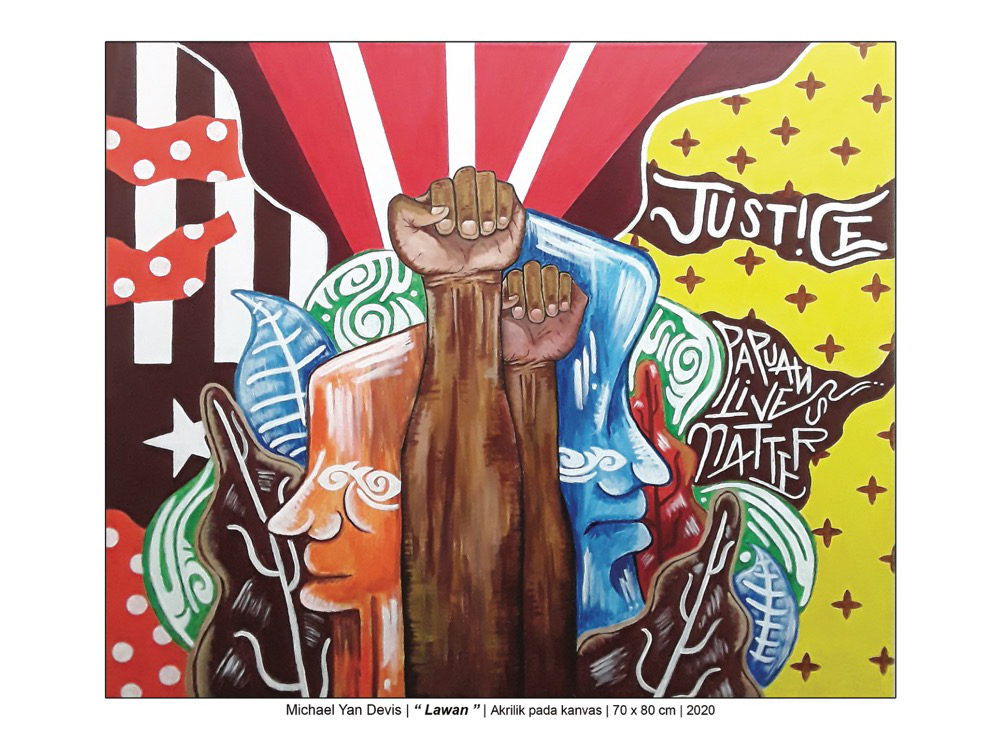
“Lawan” means “Fight.” This image was submitted by the Udeido Collective, a group of artists from West Papua.
Installation View: Cholula, Mexico
Installation View: Chiapas, Mexico
The Multispecies Justice Collaborative includes Karin Bolender (the Rural Alchemy Workshop), Sophie Chao (University of Sydney), M. L. Clark (Medellín, Colombia), Radhika Govindrajan (University of Washington), Zsuzsanna Ihar (University of Cambridge), Noriko Ishiyama (Meiji University), Eben Kirksey (University of Oxford), Elizabeth Lara (Deakin University), Jia Hui Lee (Haverford College), Kristina Lyons (University of Pennsylvania), Michael Marder (University of the Basque Country), Alyssa Paredes (University of Michigan), Craig Santos Perez (University of Hawai’i), and Kim TallBear (University of Alberta).
The exhibition in Mexico was co-produced by Proyecto Concentrarte in collaboration with the Alfred Deakin Institute of Deakin University in Victoria, Australia. The initiative was funded by the Australian Research Council through a Discovery Grant to Eben Kirksey and Sophie Chao on “The Promise of Justice” (DP200102763).

